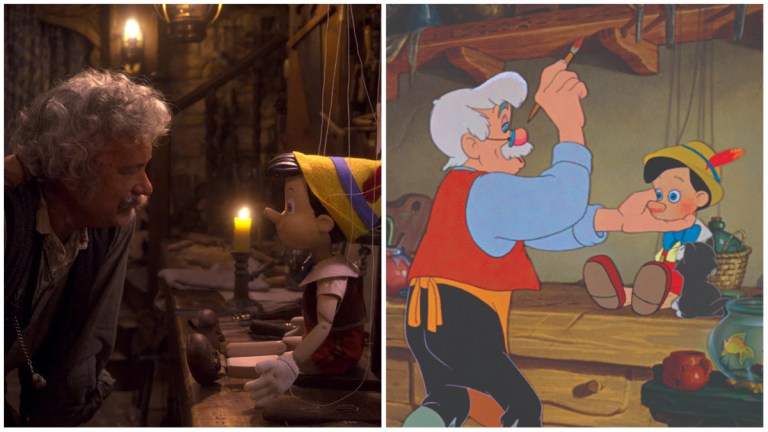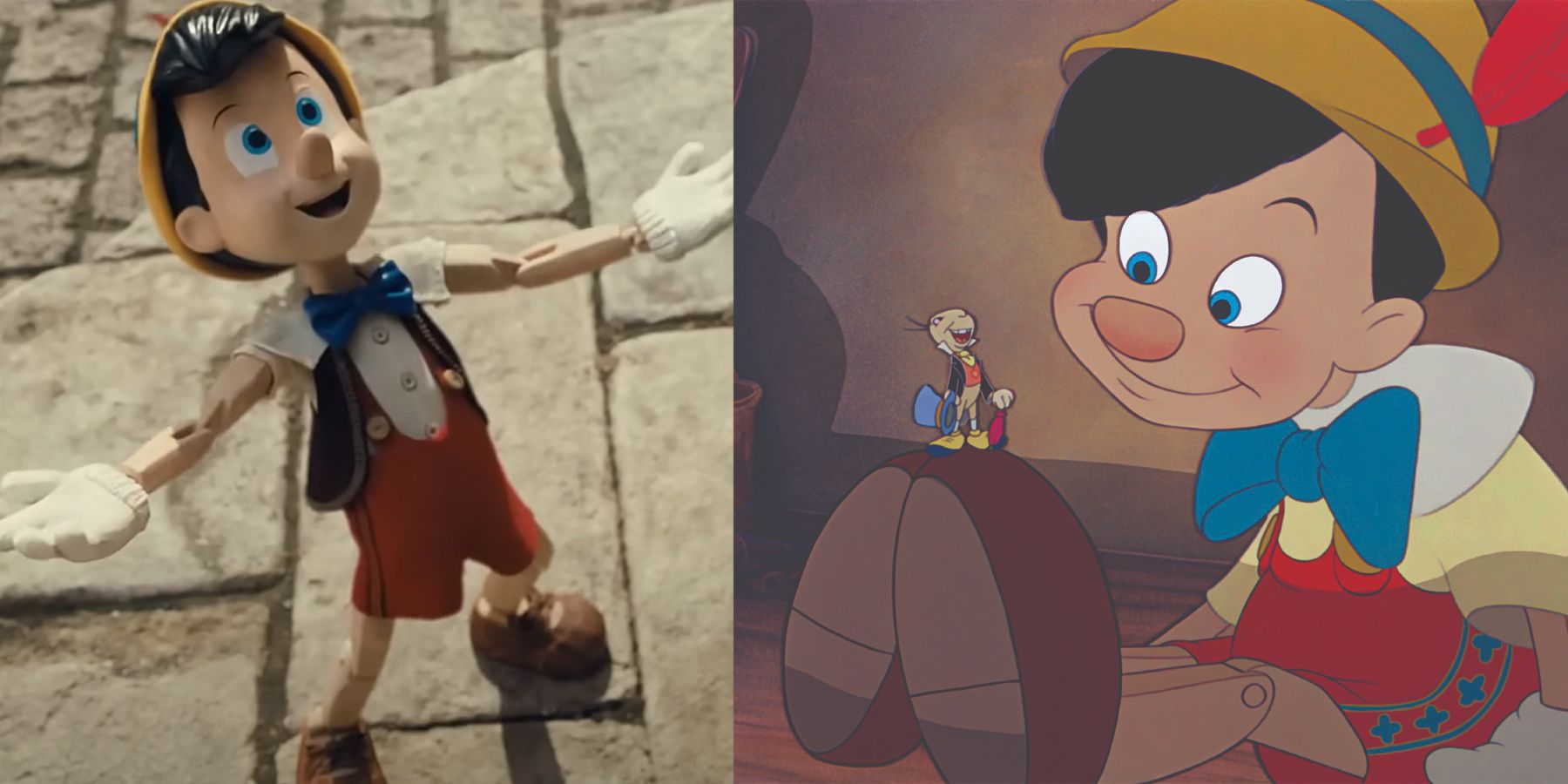Pinocchio
Rian Benoit
Pinocchio & AI Comparison
HON 255: Humanities Idea Lab
Due 10/9/2022
Find the Blue Fairy
As a child, I was never a fan of the Pinocchio story. I knew it as the Disney fairytale told with magic and tenderness. Yet, the plot of a wooden puppet, in search of becoming a boy, but being hindered by his inability to speak honestly, never interested, or excited me. While most Disney stories do exist to both entertain and educate their young viewers, the goal of Pinocchio’s Disney story felt too forced in the direction of raising honest youth. And so whenever, I watched Pinocchio, I felt cheated. The story lacked an innovative visionary and to me, wasn’t worth noting. That is until, I read the original version, as told by Carlo Collodi
A strong indicator of a well written story is its popularity among differing cultures and populations. To have a story translated and distributed globally for all to enjoy demonstrates the importance of the anecdote’s message and meaning. Following the Holy Bible (of course), the most widely translated story of all time is Collodi’s The Adventures of Pinocchio. And although the original was written in Florence, Italy during the region’s Industrialization period, the message has since touched millions. Arguably, the small inconsistencies in the translations are part of what makes the story so unique and beautiful, because per the English translation, some of the Italian phrases can’t be accurately converted to English and are left in their unedited form. I found that this aided to the jumbled and urgent tone to the story.
After annotating and researching the story of Pinocchio, I turned to watch Stephen Spielberg’s 2001 A.I. Artificial Intelligence film. Initially, I was surprised to see Spielberg’s name because I am familiar with many of his other famous and notable productions, but, not with this one. I did some additional research and was reminded of some of Spielberg’s older works including ET, Hook, and TinTin, in which adventures led by innocent and pure intentions communicate an important message to viewers. The same is done in A.I. Artificial Intelligence, leaving readers with a lasting impression from David’s trials and triumphs throughout his existence and adventure.
I have always appreciated an artist who employs a trademark phrase or theme, such as many of the films developed by Spielberg. Not only does he employ impressive tactics to engage viewers, but he helps the actors and actresses in his films to do the same. I found this video on IMDb that shared many of Spielberg’s trademarks in his directorial style. And each of the examples were eye opening because I could immediately place them in countless movies, I’d watched both from Spielberg and from other films where directors borrowed from Spielberg in their own filmmaking process. First off is the use of circles and spheres. Spielberg often forces the viewer to see characters and actions through circular forms such as circular windows, lights, or random and obsolete objects in or near a scene. This aids in conveying both a more futuristic and voyeuristic perspective for viewers which I found more enticing when employed in this film. Spielberg also loves doing a close up on actors as they experience raw and honest emotions in real time. Spielberg also tells a lot of stories encompassing “grounded fantasy” where some of the events are realistic and seem plausible; like the collapse of our population and society due to greenhouse gas emissions and global warming like in A.I. Artificial Intelligence, where entire cities are submerged under water. And then the most common and notable is the impressive and near perfect acting by young actors. Many of Spielberg’s best films depict innocent and intelligent youth embarking on these adventures and missions with nothing but their wits and often, a “partner in crime”. The same applied here, where David and Gigolo Joe embark on a mission to track down the illusive Blue Fairy.
Now that I have shared some of my analysis of both the original Pinocchio story and the movie, A.I. Artificial Intelligence, I will explain some of the connections I drew between the two. Many of the general items within each story are very similar and it’s obvious that the original screenwriter of the A.I. film, Ian Watson drew inspiration heavily from Collodi’s story The Adventures of Pinocchio. First off, both Pinocchio and David were created by people seeking some form of companionship to ease their loneliness. Geppetto carved Pinocchio into a marionette so he could have a son of his own while Monica, who didn’t manufacture David, allowed him to imprint on her and pretended he was her own as her biological son recovered in a coma like state. And while Pinocchio’s talking cricket wasn’t as instrumental in the original story as he was in other adaptations, David had a similar presence in his existence, Teddy, the robotic talking Teddy Bear. Teddy and David ended up spending over 2000 years together which certainly differs from the time Pinocchio spent with the cricket before he killed him in a rage. That act of pure anger was mirrored by David though when he was inside the office of his creator, Professor Hobby and destroyed another mecha, demonstrating rage unlike that of a typical innocent human boy.
Additionally, like Pinocchio is sidetracked by other schoolboys and bad influences during his adventures, David gets involved with Gigolo Joe whose personality and intentions differ in many ways from David’s. Another obvious similarity is in the place where Pinocchio is tricked and turned into a donkey along with other boys. Spielberg and Watson were inspired by this in developing the Flesh Fair where robots were burned with acid and destroyed for the pleasure of mecha-hating humans. There is also the overwhelming Prescence of the depths of the ocean in each story where Geppetto is trapped inside a whale and where David remains underwater at the foot of the Blue Fairy statue. And lastly, the most important similarity between the two, is the search for the Blue Fairy. Pinocchio and David both search tirelessly for her in hopes, that she can make them into real boys. The sad part is that in the fairytale of Pinocchio, the fairy does exist, and grants more than Pinocchio could have ever wished for. However, the statue David finds is merely a part of the sunken Coney Island Pinocchio attraction.
The plots also had several differences though. While it wasn’t referenced often in the original story, Pinocchio’s nose did grow when he lied. This or something like it never happened to David. Additionally, David wasn’t mischievous and wreckless in the way Pinocchio was because David’s only goal was to be loved by his “mother” and anything he did that appeared to be evil or mischievous was perpetrated and orchestrated by his brother who wanted him out of his and his parent’s lives. Pinocchio was enough bad influence for himself to cause trouble. Additionally, Pinocchio was loved deeply by Geppetto. And while it took him a while to realize and acknowledge it, he was cared for nevertheless. David, on the other hand loved Monica because he was programmed to do so. Monica always loved her own son and failed to develop a true connection with David that could outlast the obstacles they faced once her son is no longer sick.
Pinocchio was also able to learn to be selfless. And although it took some time, his donation to the Blue Fairy didn’t go unnoticed and earned him the transformation he so desperately wanted. David was unable to think of anything but himself and his desire to also become a boy. He made no sacrifices to do so that would help others. He prioritized his wants above all else and ended up abandoning Teddy in the end to spend just one last day with a clone of his mother. Because of this, I believe that if the story turned in another direction where the blue fairy really did exist, she would have denied David’s requests because his want to become human was backed only by what the Professor had programmed him to think and want. David wanted to be loved because he loved. And in wanting that reciprocation, he witnessed the love around him that was shared between humans, and he realized the only way to earn Monica’s love was to be like her and her natural son.



Comments
Post a Comment